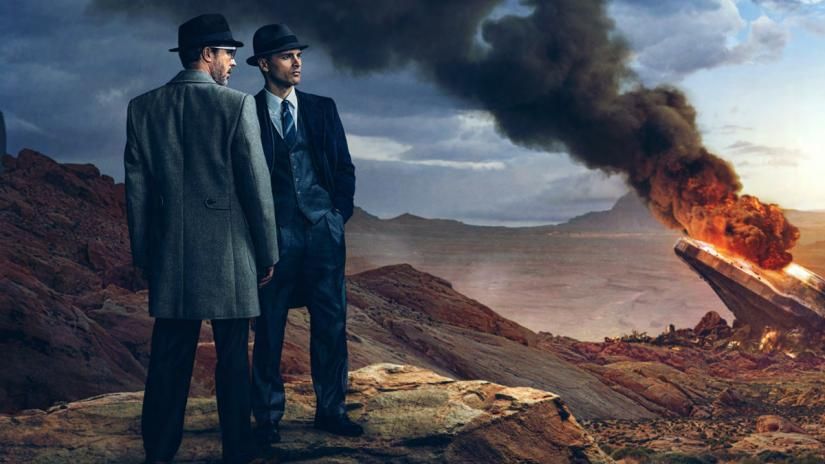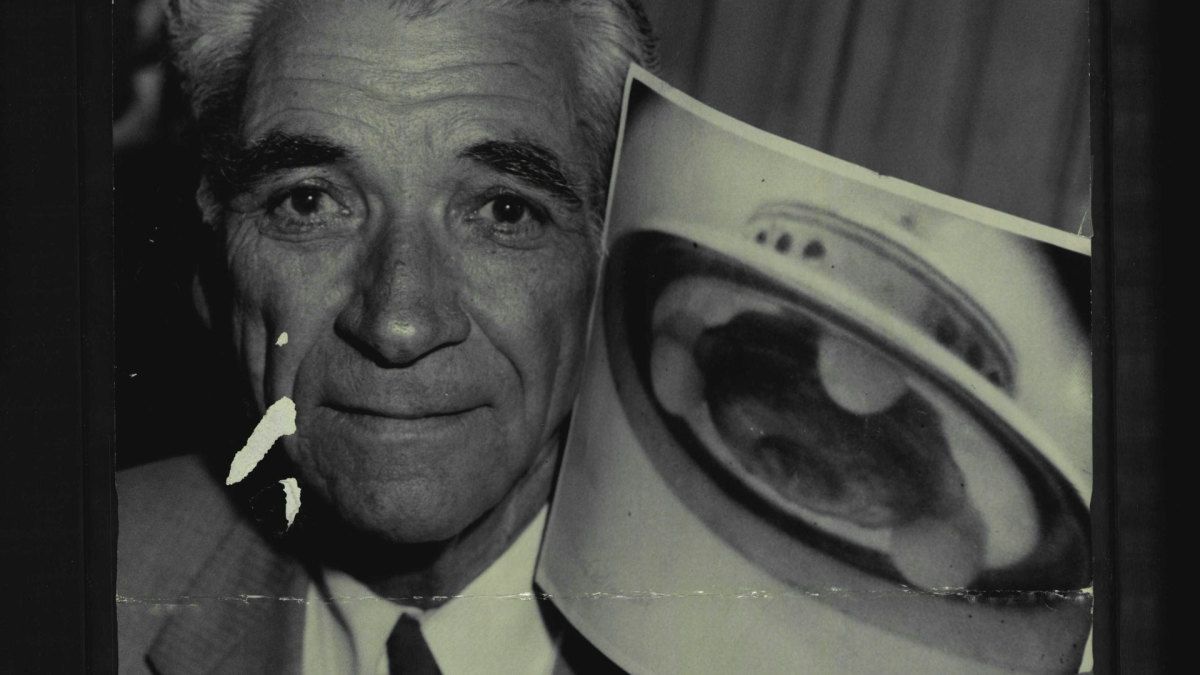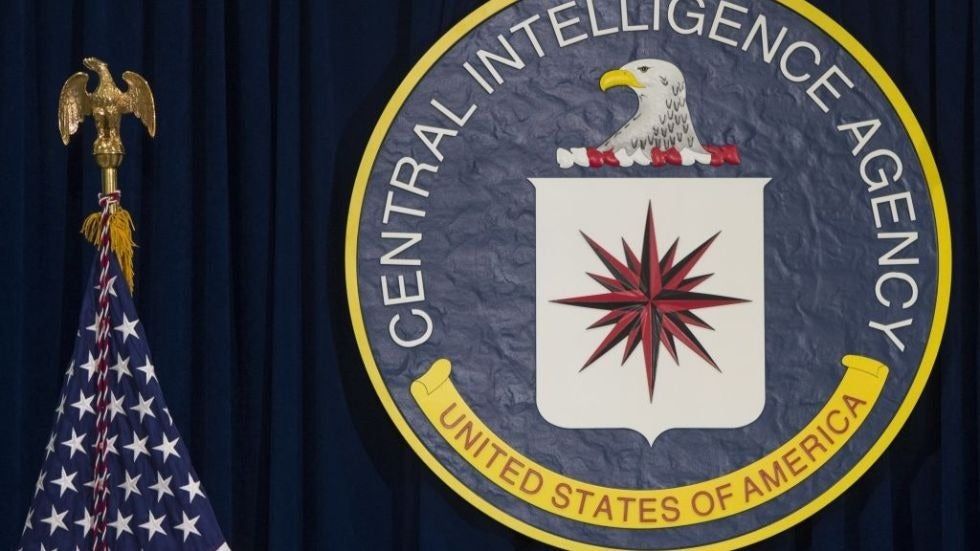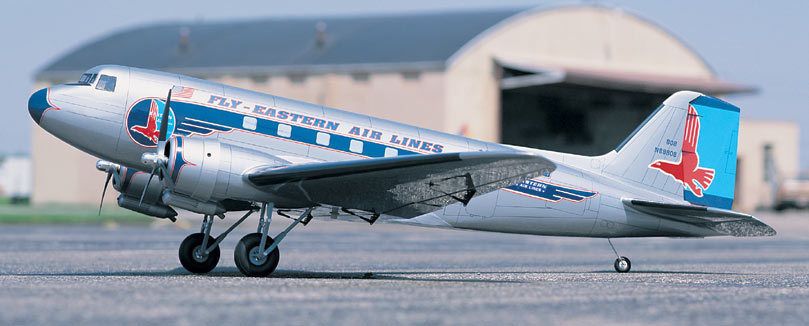Alien Investigation Series ‘Project Blue Book’ Promises More Weird Encounters in Season 2
Article by Elizabeth Howell January 28, 2020 (space.com)
• The History Channel’s hit television series, “Project Blue Book”, is back for Season 2. The show, which airs on Tuesdays at 10 p.m. EST and PST, follows the U.S. Air Force “investigation” into UFOs during the 1950s and 60s. Under Blue Book, Air Force officer Edward J. Ruppelt and astronomer J. Allen Hynek and their successors examined over 12,000 UFO sightings. The HISTORY show delves into some of the 700 still-unexplained encounters.
• Series creator and executive producer David O’Leary said that he became convinced that UFOs really existed through his research on Project Blue Book. He is quick to note that this doesn’t necessarily mean that they are extraterrestrial. O’Leary says that in the end, both Ruppelt and Hynek themselves became convinced that UFOs were real and represented a true mystery worthy of scientific study. “Something clicked for me,” said O’Leary, “This is unbelievable (to me). So this ….series … examines this (UFO) program through the eyes of these two men.”
• O’Leary has spent many hours reading the first-hand research from both Blue Book, via the declassified documents found in Hynek’s book The UFO Experience, and from independent UFO historians. O’Leary interviewed the last living director of Blue Book — Robert J. Friend, who died in June 2019 at age 99. Friend provided not only details of the investigations, but advised them on what the Blue Book offices looked like and details of the show’s set.
• The ten episodes of Season 1 of Project Blue Book ran between January and March 2019. Last year’s show topics included a “dogfight” with a UFO over Fargo, N.D. in 1948; “foo fighters” during World War II (Friend was a WWII fighter pilot himself); and UFOs buzzing Washington DC in the summer of 1952. O’Leary says he likes to mix it up and explore scenarios beyond traditional UFO sightings in the sky, such as chasing aliens through the forest, making telepathic connections with aliens, and a Kentucky family that reported an alien home invasion.
• Anything beyond Season 2 has not been confirmed. But O’Leary and his team say they “have a lot of new ideas and areas to explore” and would be interested in producing more episodes.
“Project Blue Book,” the hit television docudrama about the U.S. military’s investigations into aliens more than 50 years ago, is back for Season 2.
The History Channel series runs on Tuesdays at 10 p.m. EST and PST — check your local listings to confirm the time in your viewing area. The next episode is tonight (Jan. 28).

The series shares the same name as the real-life U.S. Air Force investigation into unidentified flying objects (UFOs), which was called Project Blue Book. That investigation launched in 1952 and continued until 1969. Experts examined more than 12,000 UFO sightings (of which more than 700 are still unexplained), according to series creator and executive producer David O’Leary.
“For me, UFOs have been a lifelong obsession,” he told Space.com. “I have always been fascinated by the question [of] ‘Are we alone in the universe? And I never felt you could honestly answer that question without examining the UFO issue.”
O’Leary said through his research on Project Blue Book, he became convinced that there “really is a phenomenon” of UFOs, even though experts often debunk the purported sightings, or say that the existence of UFOs doesn’t necessarily mean that aliens are in our airspace.
“Once I learned the chief of scientific consultants for the U.S. Air Force [J. Allen Hynek] and the first director of that program [Edward J. Ruppelt] both became convinced through this program that UFOs are real and represent a true scientific mystery and worthy of true scientific study, something clicked for me. This is unbelievable. So this is a drama series that examines this program through the eyes of these two men.”
O’Leary has spent many hours reading the first-hand research from both Blue Book, via the declassified documents in Hynek’s book “The UFO Experience” (Regnery, 1972), and from independent UFO historians. The producer also interviewed the last living director of Blue Book — Robert J. Friend, who died in June 2019 at age 99. Friend not only provided details of the investigations, but also discussed matters such as what the project’s offices looked like. His testimony helped with the sets on the show, O’Leary said.
2:14 minute trailer for Season Two of ‘Project Blue Book’ (HISTORY YouTube)
FAIR USE NOTICE: This page contains copyrighted material the use of which has not been specifically authorized by the copyright owner. ExoNews.org distributes this material for the purpose of news reporting, educational research, comment and criticism, constituting Fair Use under 17 U.S.C § 107. Please contact the Editor at ExoNews with any copyright issue.










